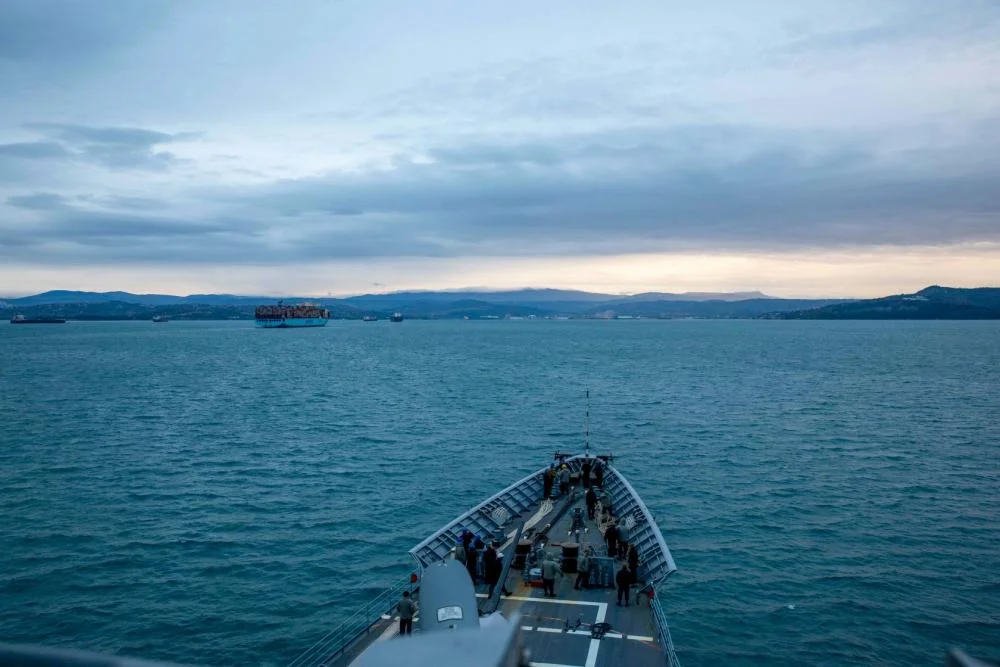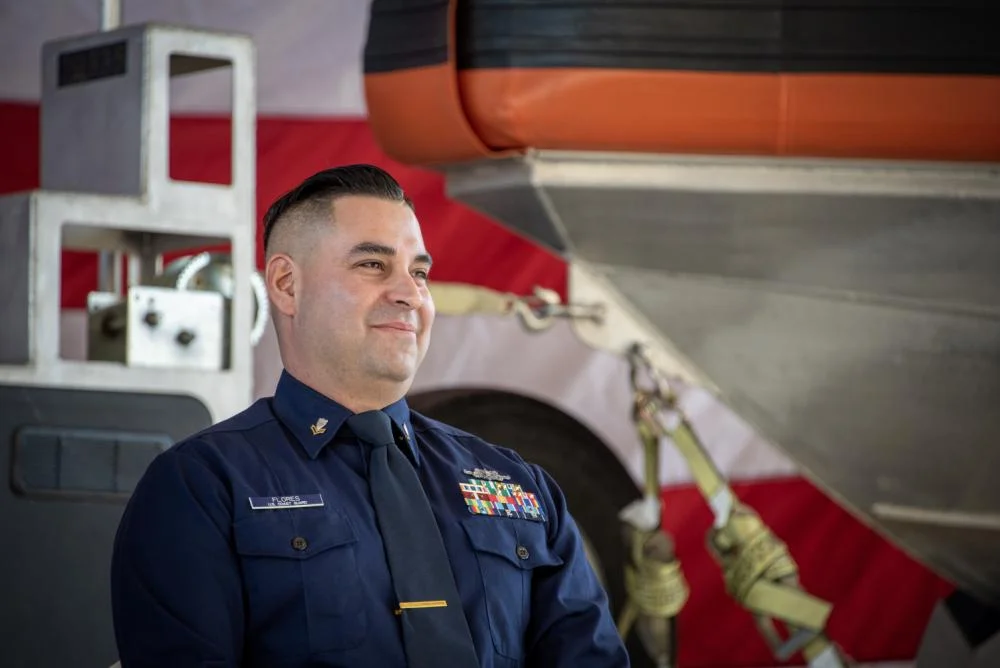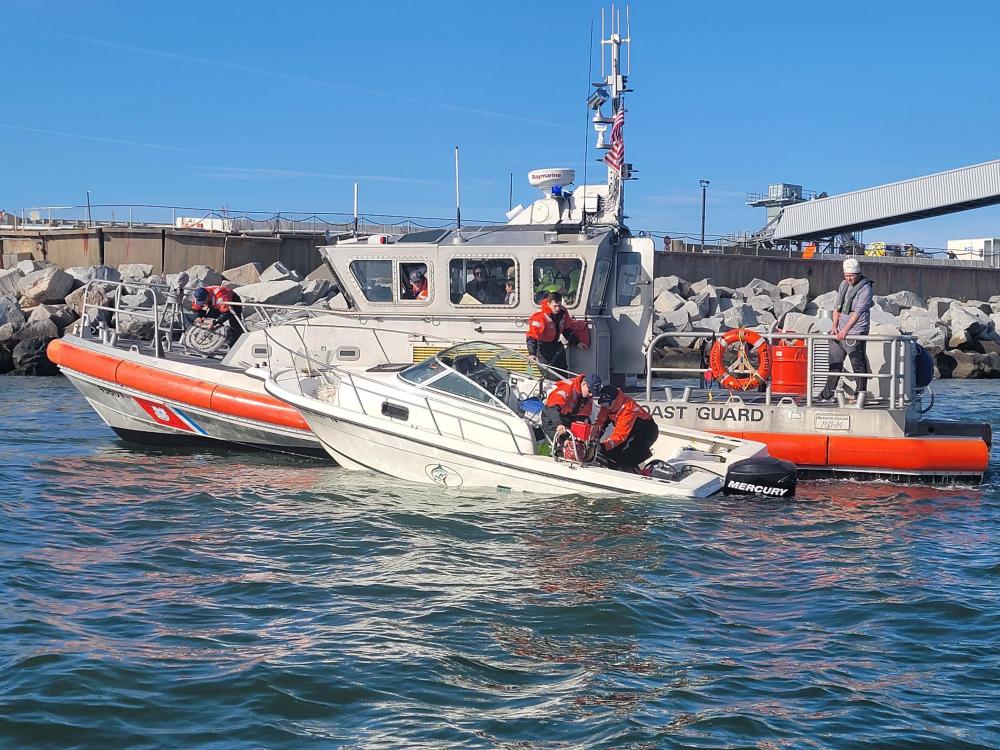DVIDS – News – USS Leyte Gulf Arrives in Slovenia for Port Visit
KOPER, Slovenia – The Ticonderoga-class guided-missile cruiser USS Leyte Gulf (CG 55) arrived in Koper, Slovenia, Dec. 3 for a scheduled port visit.
Leyte Gulf’s visit to Slovenia reflects the United States’ commitment to regional partners and allies, and compliments the exercises, training operations and cooperation conducted between NATO allies.
“Leyte Gulf’s crew produced tremendous results this past month,” said Capt. Weeldreyer, commanding officer of Leyte Gulf. “We are excited to spend time with our Slovenian friends and are grateful for their gracious hospitality.”
Prior to arriving in Koper, Leyte Gulf participated in the NATO-led vigilance activity Neptune Strike 22.2, a multinational exercise designed to provide tactical training for NATO units. Leyte Gulf, part of the George H.W. Bush Carrier Strike Group, participated alongside Italian navy destroyer ITS Caio Duilio (D 554), ITS Carabiniere (F 593) and Albanian Coast Guard ships ALS Lissus (P 133) and ALS Butrinti (P 134).
While in Slovenia, the ship’s leaders will meet with national and local political representatives, enhancing the relationship between the two NATO states. Leyte Gulf’s crew will participate in a community relations opportunity in Bodrez, Slovenia, where Sailors will work in tandem with the Scouts Association of Slovenia to beautify the infrastructure of a local campsite.
Leyte Gulf, homeported in Norfolk, Virginia, is operating as part of the USS George H.W. Bush carrier strike group, operating in the U.S. Sixth Fleet area of operation as part of a scheduled deployment.
The Nimitz-class aircraft carrier George H.W. Bush is the flagship of CSG-10, GHWBCSG. CSG-10 is comprised of George H.W. Bush, CVW-7, Destroyer Squadron (DESRON) 26, the Information Warfare Commander, and the Ticonderoga-class guided-missile cruiser USS Leyte Gulf (CG 55).
The ships of DESRON 26 within CSG-10 are USS Nitze (DDG 94), USS Farragut (DDG 99), USS Truxtun (DDG 103), and USS Delbert D. Black (DDG 119).
The squadrons of CVW-7 embarked aboard the George H.W. Bush are the “Sidewinders” of Strike Fighter Squadron (VFA 86), the “Jolly Rogers” (VFA-103), the “Nighthawks,” ( VFA-136), the “Pukin Dogs” (VFA-143), the “Bluetails” of Carrier Airborne Early Warning Squadron (VAW 121), the “Patriots” of Electronic Attack Squadron (VAQ 140), the “Nightdippers” of Helicopter Sea Combat Squadron (HSC 5), and the “Grandmasters” of Helicopter Maritime Strike Squadron (HSM 46).
For over 80 years, NAVEUR-NAVAF has forged strategic relationships with allies and partners, leveraging a foundation of shared values to preserve security and stability.
Headquartered in Naples, Italy, NAVEUR-NAVAF operates U.S. naval forces in the U.S. European Command (USEUCOM) and U.S. Africa Command (USAFRICOM) areas of responsibility. U.S. Sixth Fleet is permanently assigned to NAVEUR-NAVAF, and employs maritime forces through the full spectrum of joint and naval operations.


 Private Internet Access gives you unparalleled access to thousands
of next-gen servers in over 83 countries and each US state. Your
VPN experience will always be fast, smooth, and reliable.
Private Internet Access gives you unparalleled access to thousands
of next-gen servers in over 83 countries and each US state. Your
VPN experience will always be fast, smooth, and reliable.![DVIDS – Images – ‘Heroic, humble’ Coast Guardsman selected as 2022 USO Service Member of the Year [Image 4 of 4] DVIDS – Images – ‘Heroic, humble’ Coast Guardsman selected as 2022 USO Service Member of the Year [Image 4 of 4]](https://101veterans.com/wp-content/uploads/2022/12/1670516745_1000w_q75.jpg.webp)


![DVIDS – Images – Digital Horizon 2022 [Image 18 of 18] DVIDS – Images – Digital Horizon 2022 [Image 18 of 18]](https://101veterans.com/wp-content/uploads/2022/12/1670322174_1000w_q75.jpg.webp)
![DVIDS – Images – Coast Guard rescues three adults and one child from sinking vessel [Image 2 of 2] DVIDS – Images – Coast Guard rescues three adults and one child from sinking vessel [Image 2 of 2]](https://101veterans.com/wp-content/uploads/2022/12/1670257324_1000w_q75.jpg)




![DVIDS – Images – Murtha Cancer Center 10th Anniversary Celebration, 2 December 2022) [Image 9 of 9] DVIDS – Images – Murtha Cancer Center 10th Anniversary Celebration, 2 December 2022) [Image 9 of 9]](https://101veterans.com/wp-content/uploads/2022/12/1670062698_1000w_q75.jpg)
